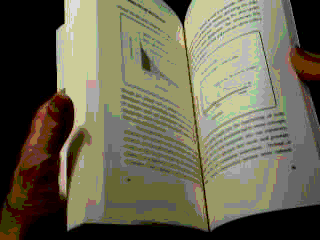
Chapter Nine
The Climate and Which Way the Wind Blew
When I arrived in this land, its population was
hopelessly skewed, its few female inhabitants isolated in mind
and space, as much from one another as from the ranks of chiefs.
There was an invisible typing pool, located elsewhere, and a
sprinkling of secretaries, floor receptionists and an occasional
clerk of the female persuasion. On the floor where most of the
chiefs resided, the number was barely more than a handful.
Nor was commerce with one's neighbors encouraged. The sight
of two women together was unknown, not counting the little
group of the senior chiefs' secretaries who sat together in an
open area outside the offices near the boardroom. The air was
very purposeful with socializing fairly confined to the arrival
of the tea wagon, mid-morning and mid-afternoon. In the beginning
I was preoccupied with my new job, exploring my surroundings and
its resources but after a while I began to feel that there was
something missing.
Remembering that when I had been teaching at SUNY
in Brockport, my closest associates had been women who had
the same interests, my horizon now seemed more empty until I
finally discovered two other young mothers whose ideas
coincided with my current passions, not all of them pleasant.
Our first and greatest loss was the absence of our children.
Every day when we left for work, the same pain of leaving our
precious little ones was there to remind us of the sacrifice we
hoped would ultimately make their futures better. That pain
was a unifying force that drew our group together.
Sharing our worries over unsatisfactory daycare, ways to
keep our children's spirits up, coping with their many needs,
reinforced our own shattered resolve. The fear that someday
we would wake up to find that we had no acceptable care for
our children was one that we all dreaded facing. One day when
I encountered that petrifying dilemma, I decided to do the
unthinkable. The day I brought Michael to the office made
nervous history among the chiefs....



...
In contrast to Mary´s isolation in the outside world,
Nermin came amply supplied with family, including parents,
in-laws, and more. They were Shias of East Indian descent who
had fled Tanzania, during political trouble there. Barely out
of school, she had watched government officials extort
unofficial fees from emigres. Although her family had
succeeded in avoiding these transactions, they had had to come
to Canada, almost one by one. Regrouping once they were safely
free, they filled Nermin´s life at home with old world ways
and rules.
Fascinating vignettes emerged in Nermin´s stories of
family: neti pot and eastern medical rituals; ghee-rich recipes
prepared with generations of maternal concern for Nermin´s
postpartum nutritional needs.
More conservative, Nermin was the one that struggled
with a dual cultural identity, trying to please the elders to
preserve her connection to her roots but never quite succeeding
because of her westernized education. The tension created in
the younger generation of her family was likely the source of
her own husband´s inconvenient migraine headaches. But it
never seemed to daunt her commitment to being liberated.
After the birth of Nermin´s baby, she became more
dependent on her family´s sheltering connection. We almost
envied this security except for one lingering doubt. Though
Nermin´s baby had assurances of family daycare, it pained her
when her little one preferred another at end of day.
Though we worked closely throughout the day, our
missions into territories not our own were never in number. The
sight of women in the office was becoming more routine and our
group´s collaboration was being accepted but we noticed that it
was somehow a different situation when we were in motion,
especially outside our own area. Together on a mission, our
group would be even more conspicuous among the tribes than
separately and we did not want to alarm the natives.
This solitary mode of operation...






